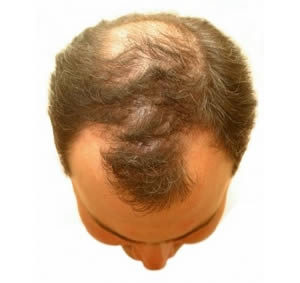 Alopecia (hair loss) is a remarkably widespread indisposition that affects both women and men. The materialization is usually acknowledged to be higher in males than women, despite the fact that there is a certain amount of evidence that suggests that the supposed differences in incidence could indicate the as many.
Alopecia (hair loss) is a remarkably widespread indisposition that affects both women and men. The materialization is usually acknowledged to be higher in males than women, despite the fact that there is a certain amount of evidence that suggests that the supposed differences in incidence could indicate the as many.
Alopecia is a strikingly socialistic infirmity that bothers around 50% of men and possibly as many females above forty. It may be that thirteen percent of females who have not yet reached the menopause have been reported to have some indication of androgenetic alopecia. However, the instance increases greatly in women post menopause, it might affect 75% of females over sixty five.
Alopecia is mostly a cosmetic disease. Other than affecting the patient from a psychological standpoint, the complaint is noteworthy only in that it allows ultraviolet light to reach the head and, thus, engenders a rise in the magnitude of actinic damage. Men with androgenetic alopecia may have a higher appearance of myocardial infarction. An increase in mild prostatic hypertrophy has also been associated with it. If these associations are proven conclusively, this malady will be of a great deal higher clinical gravity.
The happening and the severity of androgenetic alopecia tend to be biggest in white males, second highest in Asians and African Americans, and lowest in Native Americans and Eskimos. The majority of sufferers have an onset prior to age forty years, even if a lot of the patients (both male and female) show evidence of the affliction prior to reaching 30.
Alopecia – History
- The onset is a gradual event
- Men commence with gradual loss in the temporal regions, causing a reshaping of the anterior part of the hairline. Generally speaking, the onset of baldness progresses according to the Norwood/Hamilton classification of frontal and vertex thinning
- Women typically start with diffuse loss on the crown. Bitemporal loss does occur in females but extensively to a lesser degree than in men. Mostly, women maintain a frontal hairline
Physical
- In both men and females with androgenetic alopecia, the transmutation from large, thick, pigmented terminal hairs to shorter, thinner, indeterminate hairs and at last to undersized, gauzy, unpigmenetd vellus hairs in the involved locations is a gradual happening. As the ailment continues, the anagen phase shortens with the telogen state staying constant. As a result, more hairs are in the telogen stage and the sufferer could notice an increase in hair shedding. The conclusion can be a patch of unmitigated denudation. This area varies from sufferer to sufferer and is altogether most palpable at the vertex
- Women with androgenetic alopecia universally lose hair distributed over the crown. Making a gradual thinning of the hair rather than an area of apparent baldness. The part is widest anteriorly
- The frontal hairline is usually preserved in females with this disorder, whereas males note a gradual recession of the frontal hairline early in the process
Alopecia Causes
Androgenetic alopecia is a genetically determined event. Androgen is elementary for transformation of the complaint, as it is not found in men castrated previous to puberty. The progress of the disease is blocked if postpubertal males are castrated. Androgenetic alopecia is presupposed to be a fundamentally inherited ailment with fluid penetrance and expression.
It must be stated though, that it may be of polygenic inheritance. Lately, it was noted that follicles from balding areas of individuals with androgenetic alopecia are able to yield terminal hairs when implanted into immunodeficient mice. This indicates that systemic or external considerations might play a role in this malady.
As reported in 2005, it was seen in mature mouse skin that the hedgehog family of intercellular signaling proteins can stimulate the changeover from the resting (telogen) step to the growth ste p (anagen) of the hair cycle. Whether this will assist in the regimen of androgenetic alopecia and alopecia cures may be shown in the future.
Useful related articles
- Herbs that work wonder
- Androgenetic alopecia
- Raspberry keton to treat hair loss
- Hair fall reasons
- Vitamins for hair growth
- Hair loss hints
- Hair loss FAQs
- Biotin for hair growth